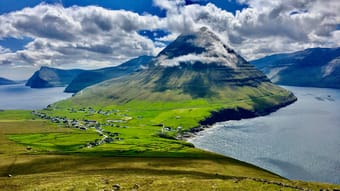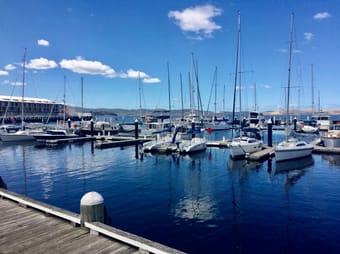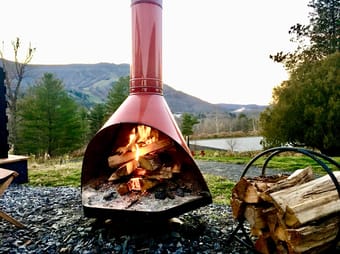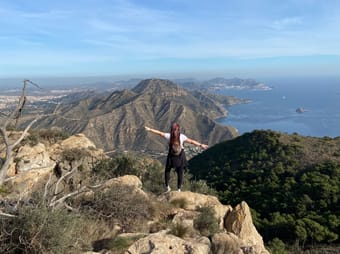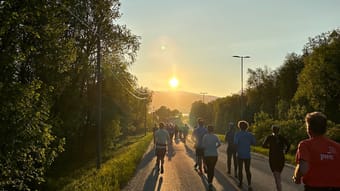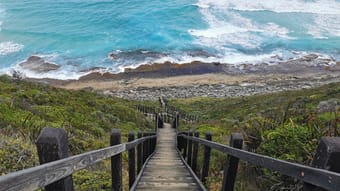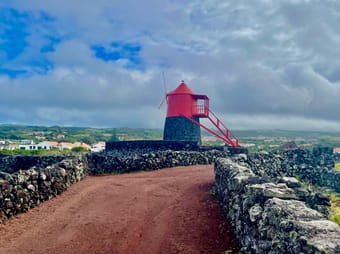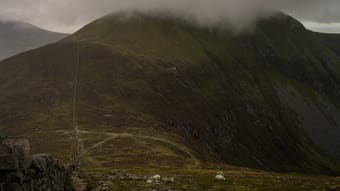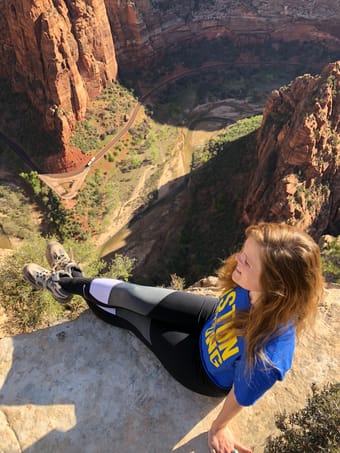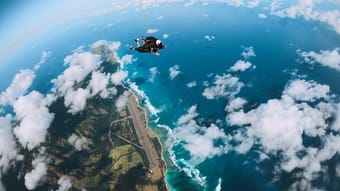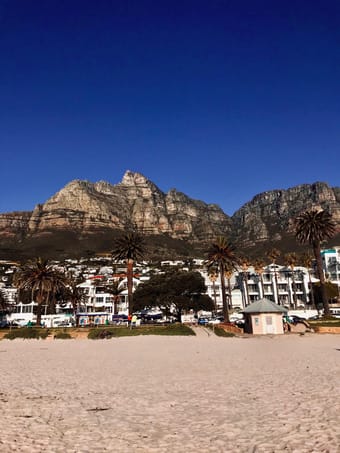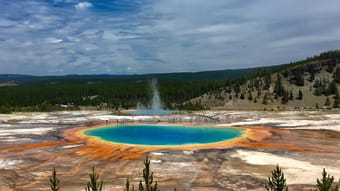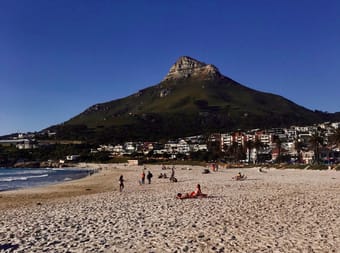Results for Hike
Introducing the next great adventure destination: the Faroe Islands. Despite being part of Europe and (loosely) governed by Denmark, many people have never heard of these eighteen islands about halfway between Iceland and Norway. Those who make the journey will be greatly rewarded with deep fjords, pop-up waterfalls, and bright green valleys. A stunning coastline is never more than five kilometers away. Sheep outnumber hikers on wind-blown trails. While Tórshavn is one of the smallest—and cutest—capitals in the world. Go now. Nonstop flights recently started from New York, so these remote islands won’t remain under the radar for long.
This detailed guide includes:
Places: islands, cites, towns, villages
Stay: hotels
Eat: cafés, coffee shops, food trucks, restaurants, takeout
Drink: bars, craft beer
Shop: design stores, music
Do: beaches, churches, cliffs, gorges, hikes, historic sites, lakes, mountains, sailing, scenic drives, tunnels, viewpoints, waterfalls
Transportation: airport
Adventure • Foodie • Nature • Road Trip • Mountain • Boutique • Outdoors • People & Culture
$30.00
0
Hobart (nipaluna) is the capital and largest city of Tasmania. It's also Australia's southernmost state capital. The city sits at the base of Mount Wellington (kunanyi) and on an estuary of the River Derwent along the island's southeast coast. It's home to about half a million people (that's 40% of the total population). This land was occupied by the Aboriginal Tasmanians before the British founded a penal colony 1804. Whalers, miners, farmers, and, eventually, Antarctic explorers, followed. Tourism has only recently begun to dominate the economy.
Hobart's historic waterfront has cobblestone streets and sandstone warehouses. They're now full of new hotels, exciting art galleries, and locally sourced markets. Battery Point has colonial cottages and cute cafés. The eery Convict Trail starts here. The Museum of Old and New Art (MONA) is just a quick ride up the River Derwent. Mount Wellington hikes offer a great lay of the land. Craft breweries and distilleries keep popping up inside the city; wineries lie just outside. While the restaurant scene is booming. Hobart is more than just a stopover. You should plan to spend at least a few days getting to know Tassie's capital.
This detailed guide includes:
Places: cities, neighborhoods, towns
Stay: hotels
Eat: cafés, restaurants
Drink: cocktail bars, distilleries
Shop: bookstores, local produce
Do: art museums, bridges, coves, cranes (really!), docks, gardens, memorials, parks, piers, rivers, sculptures, squares, stairs, trails, wharfs
Transportation: airports, ferries, highways
Adventure • Art • Boutique • Foodie • History • Shopping • Design • People & Culture
$20.00
0
It's time to get out of the city. New York City is always exciting, but it can be completely exhausting. You need to breathe fresh air and stretch your legs. You want to hike up a mountain, jump into a lake, search for waterfalls, sip seasonal IPAs, taste freshly picked veggies, and try to ski for the first time in, well, way too long. It's a good thing the Catskill Mountains are so close.
The Catskills are part of the Appalachian Mountains. They cover nearly 6,000 square miles in southeastern New York and sit about 100 miles northeast of New York City. On the eastern edge, the mountains rise steeply from the Hudson Valley along the Hudson River.
The area became a popular summer escape in the mid-20th century. All-season, outdoor activities--from fishing and hiking to cross-country skiing and snowboarding--are now the biggest draws. Old lodges and motels are being turned into boutique hotels. Plus, in the last few years, new bakeries, bike paths, bookstores, breweries, coffee shops, farm-to-table restaurants, ice cream shops, and record stores have been popping up on a seemingly weekly basis. The Catskills are cool again.
Since it's impossible to see everything in the Catskills during one trip, this guide focuses on the Northern Catskills, including the towns of Catskill, Hunter, Palenville, and Windham.
This detailed guide includes:
Places: hamlets, towns, villages
Stay: cabins, hotels, lodges
Eat: bagels, cafes, pizzerias, restaurants
Drink: breweries, cideries
Shop: farm stands, record stores
Do: forests, gardens, hikes, lakes, ledges, lookouts, mountains, rocks, trails, waterfalls
Transportation: parking lots
Note: I travel to the Catskills frequently, so this guide will be updated.
Backpacker • Couples • Digital Nomads • Family • Groups • LGBTQ+ • Pets • Female Solo • Adventure • Boutique • Budget • Design • Outdoors • Photography • Relaxation • Road Trip • Romantic • Sustainable/Eco • Wellness
$20.00
0
“The Napa Valley of Beer.”
“The Munich of the West.”
Comparisons are tricky, but there is no doubt that the Denver craft beer scene is legendary. It has been around longer than most, dating back to the Gold Rush when beer did not travel or store well: it had to be made on-site, on-demand.
Home to the major Great American Beer Festival, the Mile High City has no shortage of brews to try — classic or experimental. You can easily plan an entire trip around only breweries… and hikes and fresh air… and more brews. It’s called balance.
Contact me for a free consultation and/or custom-made Denver itinerary to get the most out of your trip to this beautiful city.
P.S. GO NUGGETS
$10.00
0
Have you ever heard of the charming little city Cartagena, in Spain? This really is a hidden gem in the south of Spain that everyone should visit! Whether you're fascinated by history, a lover of the outdoors or simply looking for a cute, inexpensive city to check out - Cartagena should be added to your travel list!
I've broken down all my top tips for visiting the city and surrounding areas - from places to eat and drink to hikes to day trips. You definitely won't be short on things to do and places to see.
Backpacker • Couples • Digital Nomads • LGBTQ+ • Plus Size • Female Solo • Adventure • Architecture • Art • Budget • Coffee • Foodie • History • Outdoors • People & Culture • Photography • Slow Travel • Wine
Free
0
Come and explore Washington’s own Bavarian Village located in the beautiful Cascade Mountains, Leavenworth.
In this guide I focus on the spring & summer season and include my recommendations for…
✨Hotels & Airbnbs
✨Must try restaurants & bars
✨Outdoor Activites & Hikes
✨Local Shops & More!
Adventure • Foodie • Nature • Road Trip • Mountain
$10.00
0
Sadie ~ Jet-Setting Runner
Available for hire
Tromsø and Senja 7-day Itinerary for the Midnight Sun Marathon
If you're running the Midnight Sun Marathon in 2025, this is the travel guide you want. This 7-day itinerary breaks down the perfect trip to Tromsø and Senja.
Day 1: Travel to Tromsø
Day 2 and 3: Explore Senja
Day 4-7: Race and travel around Tromsø
At the end of this guide I include additional recommendations for hotels, restaurants, activities, and hikes so that you can create a trip that works for you.
If you are looking for a more customized guide to suit your needs, feel free to connect and I can create a customized itinerary just for you.
Backpacker • Couples • LGBTQ+ • Groups • Female Solo • Family • Adventure • Budget • Outdoors • Foodie • Road Trip • Wellness
Free
0
A detailed overview to exploring all the must-do's of Western Australia's beautiful south.
📍Places to stay
🥐Where to eat
☀️What to do
🍷Where to visit
Bonus:
💎 Diamonds in: Denmark ~
Albany holds a unique charm along the coast of WA. Rich with nature, stunning hikes and gorgeous beaches - a perfect summer getaway.
While you're down in Albany, don't miss Denmark! Drive down for a day trip or make it a part of your itinerary - it remains as one of my favourite destinations 'douth.
Follow the lists below of personal recommendations to create a personalised itinerary of your own. If you'd like a helping hand with formulating a customised itinerary, lets have a chat!
Keep an eye out for the cows on your drive! Safe travels 💛
Accessibility • Family • Couples • Groups • Adventure • Coffee • People & Culture • Photography • Relaxation • Outdoors • Road Trip • Romantic • Wellness • History • Foodie • Luxury
Free
0
A hidden gem in California! With the Santa Ynez Mountains behind the city creating a dramatic backdrop and the Pacific Ocean views, this is the perfect getaway if you're looking for a Mediterranean feel.
If you are a huge foodie who loves beaches, hot springs, hikes, horseback riding, wine tastings, shops and bars. This guide is for you!
Whether you have a long weekend or just a couple of days, these are the best things to do and see in “America’s Riviera”
Couples • Adventure • Outdoors • Foodie • Shopping • History • Wine
$15.00
0
There are two major reasons to visit Pico Island: hiking and wine. Though there are trails all over the island, Ponta do Pico is the biggest (literally) draw for hikers. Mount Pico, a dormant stratovolcano, is the highest mountain in not only the Azores, but in all of Portugal. The wine is equally impressive. The vineyards are a UNESCO World Heritage Site thanks to the basalt stone walls that surround them. So the two reasons to visit Pico Island are very good ones.
Pico Island is in the Azores' Central Group of islands. You can see and easily visit two others, Faial and São Jorge, from here. The Black Island (the black volcanic soil says it all) was discovered in the 14th century, though it wasn't settled until the 1480s. Volcanic eruptions kept deterring people, though. It wasn't until the 18th century that the lava flow ceased, Verdelho grapes started thriving, and whale hunting became popular. Pico found its groove.
Similar to São Miguel, tourists are now flocking to Pico. They're lured by the humid and mild climate, rarely exported wine, bucket-list hikes, and whale-watching trips. Madalena, the tiny main town, blends history and nature on the west coast. While Pico's east coast feels like it's still waiting to be discovered.
This detailed guide includes:
Places: towns
Stay: hotels
Eat: bakeries, pizzerias, restaurants
Drink: tapas bars, wineries
Do: churches, mountains, natural swimming pools, UNESCO World Heritage Sites, windmills
Transportation: airports, car rentals, ferries
Adventure • Boutique • Foodie • Luxury • Outdoors • People & Culture • Relaxation • Road Trip • Faith • History • Wine
$15.00
0
Your adventure guide to the Mourne Mountains and Irelands Causeway Coast. From advice on hiking Slieve Donard, Northen Irelands highest peak to tips on where to eat, this adventure guide will ensure you dont miss any of the highlights of Irelands beautiful North.
Included in this guide;
- Hikes and walks (7 hiking and walking locations)
- Places to see and things to do (11 must see locations)
- Paid entry activities ( 3 paid entry activities that are worth the money)
- Places to eat (4 of my favourite tried and tested places on the North Coast)
- Tips, advice, descriptions and links to further information with every location and hike suggested.
- Constantly updated guide as I discover new places worth exploring.
Adventure • Nature • Photography • Van Life • Road Trip • Beach • Mountain • Camping
$15.00
0
Zion National Park is an all time favorite park for me and somewhere I go nearly every year. I think I'm so obsessed with it because it is so unique compared to every other national park and feels like a completely different world. The massive sandstone cliffs, the slot canyons, the hikes — it is unlike anywhere else I've ever been.
This guide covers the best hikes, places and restaurants to go to in Zion as well as some of the top spots to hit outside of the park in the surrounding towns. I've included a mix of must-see areas (despite being touristy) and some lesser-known hikes that are just as beautiful as the iconic ones.
This is a living map, meaning that every time I return to Zion and do something new (which is often), I'll add to it, and you'll get all of the updates automatically!
Destinations covered:
📍Zion National Park
📍La Verkin
📍Springdale
📍Hurricane
Recommendations included in the itinerary:
✔️Entrance information
✔️Shuttle information
✔️Where to stay and 6 accommodation recommendations
✔️5 hike recommendations with detailed information on permits and shuttles (if needed)
✔️5 restaurant recommendations
✔️3 places to see surrounding Zion National Park
Adventure • Outdoors
$6.99
0
@Theguidedtravels
Available for hire
Bucket List Tours + Experiences in O'ahu, Hawaii (with direct booking links) Oahu
Finding quality tours and experiences are SO important to me! These are the best tours on O'ahu, ranging from adrenaline to relaxation. These experiences include direct booking links to make things easier for you(:
THIS GUIDE INCLUDES:
-21 Tours/Experiences
-Bonus: Direct booking links included on every activity (when available) to make things easier for you(:
If you're also in need of categories in O'ahu such as the best beaches, hikes, places to stay, transportation, etc, check out my "Ultimate Guide To O'ahu, Hawaii" to save money!
**Please keep in mind that this guide does not include any hikes/beaches, as I have other guides that include these. If you're also in need of categories in O'ahu such as the best beaches, hikes, places to stay, transportation, etc, check out my "Ultimate Guide To O'ahu, Hawaii" to save money!**
I appreciate your support always!✨
Make sure to save this guide + tag me in your adventures @theguidedtravels. I know you’ll love the island as much as I did, and I would love to see where you decide to go(:
Adventure • Nature • Mountain • Beach
Free
0
Cape Town is one of the most beautiful coastal cities in South Africa. This is guide for a family or a couple that’s looking to do a camping trip with lots of activities around Cape Town.
This guide includes activities to do like hikes along amazing scenery, kayaking with dolphins and more. Places to eat and some camp site recommendations outside of Cape Town that include a lot of nature activities too.
$12.00
0
I lived in Bozeman, Montana for years and have visited Yellowstone National Parks many times with my family. With the help of my good friend, who has lived in the area for almost 30 years, we have put together this comprehensive guide!
It includes:
☀️ - When to Visit
🏔️ - Top Attractions
👨👩👦👦 - Family Friendly Activities
🥾 - Best Hikes
🏕️ - Places to Stay
Family • Couples • Adventure • Camping • Outdoors • Photography • Road Trip
Free
0
Cape Town is one of the most beautiful coastal cities in South Africa. This is guide for a family or a couple that loves to explore nature and city life.
This guide includes activities to do like hikes along amazing scenery, kayaking with dolphins and more. Cool places to eat and some places to stay at.
$12.00
0
Cape Town is one of the most beautiful coastal cities in South Africa. This is guide for a family or a couple that’s looking to do a camping trip with lots of activities around Cape Town.
This guide includes activities to do like hikes along amazing scenery, kayaking with dolphins and more. Places to eat and some camp site recommendations outside of Cape Town that include a lot of nature activities too.
$12.00
0
These are the best beaches in O'ahu! Every place on this list has been intentionally picked(: If you're also in need of categories in O'ahu such as the best beaches, hikes, places to stay, transportation, etc, check out my "Ultimate Guide To O'ahu, Hawaii" to save money!
THIS GUIDE INCLUDES:
-18 Beach/snorkel destinations
-Bonus: Section touching on important things to know about surfing in Hawaii
I appreciate your support always!✨
Make sure to save this guide + tag me in your adventures @theguidedtravels. I know you’ll love the island as much as I did, and I would love to see where you decide to go(:
Adventure • Nature • Beach
$5.00
0
Ask ThatchGPT

